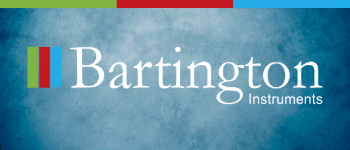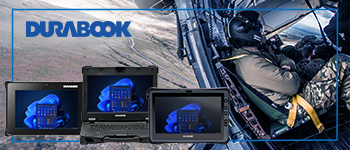Eye spy
Alan Ring outlines how festival security can be improved with body-worn cameras
As summer approaches, the UK festival scene is preparing for another busy season. With the industry growing at a compound annual rate (CAGR) of 5.7 percent over the past five years, more festivals are popping up across the country and more attendees are flocking to fields, parks and venues to join the celebrations.
But as crowds swell and events become larger or more ambitious, safety and security is becoming an ever-greater concern. Managing security in these dynamic environments has always been a challenge, but the scale and complexities of today’s festivals – where multiple stages and simultaneous headline acts are now the norm – is pushing organisers to their limits.
The atmosphere of excitement, fuelled by alcohol, music and heightened emotions, can quickly shift from fun to fraught, turning minor incidents into major threats if not properly managed. In this landscape, festival organisers face a delicate balancing act of protecting attendees while preserving the spirit of fun that draws people to these events in the first place.
At Boardmasters festival in 2024, chaotic scenes unfolded when a ‘crowd surge’ took place. Attendees reported a lack of visible security staff beyond the immediate stage area, leaving people to navigate the crisis themselves. Some injured festival goers even had to rely on fellow attendees to carry them to safety.
This incident highlights a fundamental flaw in the current approach to festival security: while events continue to grow in size and complexity, the systems designed to protect attendees are struggling to keep up. With Boardmasters planning to increase its capacity to 65,000 in 2025, the need for scalable, adaptive security strategies has never been more urgent.
As festivals grow faster than their infrastructure and contingency plans, organisers are increasingly left scrambling for solutions. So, what might a modern, future-fit approach to festival security actually look like?
Unlike the fixed infrastructure of stadiums, festivals take place in sprawling environments that are subject to constant change. Events often feature multiple stages, scattered vendor zones and diverse activity areas alongside the music acts. Plus, they’re usually set against uneven terrain and exposed to the elements. This complexity makes it significantly harder to monitor crowd movement and ensure consistent safety throughout the site.
Large crowds are often spread across large areas, often under the influence of alcohol and/or drugs, with limited mobile connectivity and over multiple days, making real-time communication and incident reporting incredibly challenging.
Security teams are frequently made up of temporary or under trained staff, who are expected to handle a wide array of responsibilities over a large area of ground, all while under intense pressure. This fragmented and inconsistent approach to security can lead to dangerous and significant gaps in coverage.
Many festivalgoers report moments of vulnerability, especially when the security presence is minimal or delayed. Whether it’s overcrowding near the front of stages, slow medical response in congested zones or poorly managed crowd flow in camping areas, the risks are widespread and varied. The experience at Boardmasters, where security was noted as being largely absent in the crowd, demonstrates the need for more strategic deployment. Not just more personnel, but smarter use of technology. Body cameras can play a role in improving accountability and awareness, but they are only one part of a broader solution to ensuring safety where and when it’s needed most.
In this context, festival security challenges are increasingly multifaceted. Traditional models relying on static security personnel or fixed CCTV camera setups are no longer sufficient. The dynamic nature of modern festivals calls for a more responsive and intelligent approach – one that can deliver both immediate reaction and broader situational awareness in real time.
As traditional security tools struggle to meet the demands of modern festivals, body-worn cameras (BWC) offer a critical, real-time solution. Unlike static CCTV cameras, which can miss key moments due to limited angle or placement, BWCs offer a first-person, time-stamped perspective, capturing incidents as they unfold with both video and audio. This creates a richer, more accurate and irrefutable record of events across the entire site, helping to fill the gaps left by more fixed surveillance tools.
For festival organisers, body-worn cameras are more than just cameras – they’re mobile accountability tools. From documenting potential crowd control issues and medical emergencies to addressing allegations of staff misconduct or attendee altercations, their footage offers clear, unbiased evidence that supports on-the-ground decision making.
Just as importantly, BWCs play a vital role in post-event investigations by supplying reliable footage that doesn’t rely on potentially flawed or conflicting witness statements. This makes them a powerful resource not only for legal protection and public accountability, but also for training new team members – transforming reactive footage into a proactive resource.
Live-streaming functionality further enhances the value of BWCs. Security control rooms can monitor events in real time, allowing teams to make faster, prioritised and more informed decisions. Whether it’s dispatching medics to a densely packed area, responding to a brewing confrontation, or tracking suspicious or aggressive behaviour to prevent an escalation, the ability to respond and act instantly and effectively is key to de-escalation and risk mitigation. In an environment where seconds can make the difference between control and chaos, BWCs offer the visibility, accountability and agility that festival security desperately needs.
The true value of body-worn cameras is realised when they are integrated into a wider, comprehensive security system. While BWCs offer powerful insights on their own, they are most effective when connected to a centralised video management platform that allows organisers to store, search, retrieve and analyse footage quickly, easily and securely. A cloud-based platform ensures that all video data is stored safely, with metadata such as time stamps, GPS coordinates and staff ID tags for easy reference and accountability.
This unified approach transforms how security teams respond to events. With real-time access to footage, control rooms can assess developing situations and coordinate more effective, immediate responses. In scenarios like the crowd surge at Boardmasters, such a system could have helped flag early signs of escalation; provided security personnel were in the vicinity to act. By linking BWCs to a central platform, organisers gain the ability to significantly reduce response times, ensuring security teams are empowered to stay one step ahead of potential threats.
Festival security is a 24/7 responsibility, often over multiple days. But it doesn’t end as soon as the final act leaves the stage. The need for vigilance continues long after the music ends – when sites are being dismantled, during staff debriefs and as attendees are packing up and making their way home.
At Creamfields North 2024, several incidents of trespassing were reported during the post-event dismantling phase, raising concerns not only about the safety of the on-site crews, but also about the potential legal and liability risks associated with unmonitored areas.
This is where BWCs can play a crucial role. By equipping overnight patrols and late-shift teams with body-worn cameras, organisers gain around-the-clock visibility across the site. These devices can document unauthorised access, deter potential intruders and provide vital evidence if incidents occur, offering an added layer of protection to staff working in high-risk environments after hours.
From logistical crews to medics, security staff to cleaning crews, many continue working long after the crowds have dispersed. BWCs ensure their safety and means that actions are recorded with the same diligence applied during peak festival hours. Because the need for security doesn’t end when the music does.
In today’s highly scrutinised events landscape, clear, verifiable evidence is essential. Not just for managing incidents, but for proving that organisers are compliant with legal regulations and meet their ethical responsibilities.
Authorities, insurers and the media are all placing increased pressure on festivals to demonstrate their commitment to crowd safety through more robust measures, effective incident response protocols and full compliance with industry regulations and standards. Failing to meet these expectations can result in reputational damage, legal disputes and even the loss of future licences.
When used in conjunction with secure, GDPR-compliant data storage and tamper-proof audit trails, BWCs can play a crucial role in supporting compliance and building trust in how footage is handled. In the event of an incident, footage can be quickly retrieved and assessed to support investigations, allowing organisers to respond to legal claims, regulatory inquiries or media scrutiny with confidence and clarity. This level of transparency not only mitigates liability but also helps maintain trust with attendees, stakeholders and the general public.
In an industry where reputation is everything, having reliable, real-time evidence is no longer a nice-to-have, it’s a necessity. The ability to demonstrate that safety and accountability are being prioritised can make all the difference when it comes to public perception and long-term success.
From crowd surges to after-hours security breaches, festivals today face an increasingly complex and evolving set of safety challenges. Traditional security models that rely on static cameras, under-trained staff and fragmented responses, are no longer fit for purpose. As festivals grow in size and complexity, it’s clear that outdated approaches won’t keep pace with modern risks.
BWCs offer festival organisers a chance to rethink and retool their security operations. When integrated into a wider system, these devices enable faster, smarter responses across every phase of the event – from build-up and live hours to breakdown and clear-up. Their ability to capture and stream in real time transforms on-the-ground security from reactive to proactive.
To keep pace with evolving risks, festival security must be approached as a dynamic integrated ecosystem. It must be seen as a dynamic, comprehensive and integrated ecosystem that brings together real-time data, innovative technology and frontline tools to tackle the realities of today’s festival environments. Reimagining festival security in this way isn’t just about preventing a crisis, it’s about protecting people, strengthening trust and safeguarding the future of live events for everyone involved.
Alan Ring is CEO at HALOS.









